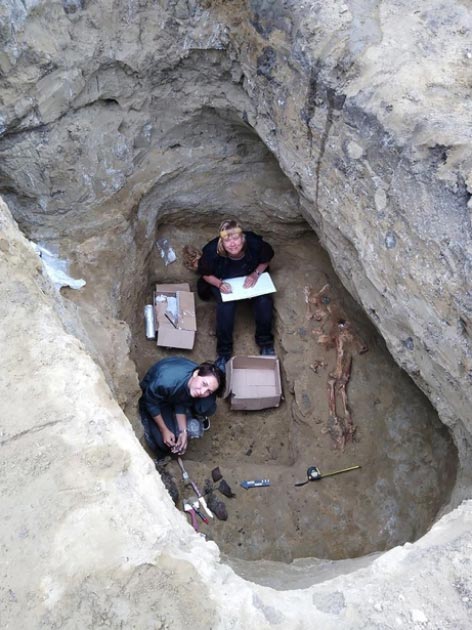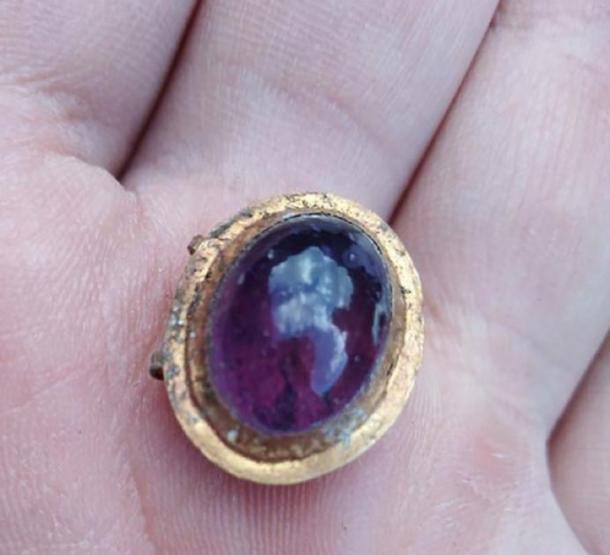Ancient warrior woman found buried with rare jewelry created during the Roman Empire

2,000-Year-Old Warrior Woman Discovered with Rare Gems
In the Russian Republic of Kabardino-Balkaria, an ancient warrior woman with rare Roman jewels was found.

Believed to be a warrior or leader, the ancient women was discovered in a family tomb in Kabardino-Balkaria, a mountainous northern Caucasus between Georgia and Russia, and she was found to wear two “very precious rings” with dark glass-centered centres.
The Alans warrior people who arrived in the Caucasus in the 1st and 2nd Centuries AD were thought of as nearly two thousand years old and it has been shown that this highly respected woman was the wife, sister or mother of an prominent male, which the archaeologists believe partly on the basis of her “pricelessness.” of her jewelry.
Dr. Anna Kadieva, an archeologist from the Museum of State Histories of Russia, headed an expedition at the North Caucasus burial site of Zayukovo-2burial and told reporters that a warrior and two other men were buried alongside the old woman.

A Daily Mail article informs you that two rings were created from what Dr. Kadieva describes as a quite “complex technology,” since the two were cast out of transparent white glass with golden fibres, and in the center of it they were made of dark glass, “Roman-made is without any doubt,” Dr. Kadieva adds.
A bright violet amethyst medallion was also discovered and archaeologists found that the beads found on the woman’s shoes were crafted of glass containing “carnelian”, which is an orangey mineral belonging to the Quartz family and widely used during Roman times in engraved gems for signet (or seal) rings for imprinting wax seals on correspondences.
And speaking of the tiny, delicate, ancient artifacts, Dr Kadieva said that the rings would have been quite “priceless” in what she calls the “barbarian” world of North Caucasus, where no glass production, or even blowing technology, existed at the time.

The woman’s bright violet amethyst medallion is also described by Dr Kadieva as a “priceless high class gem” and worthy of its gold casing, which together with the rings lead the archaeologists to the conclusion that wealthy warriors from North Caucasus had presented “expensive jewelry to their loved ones.” And because she was buried alongside a warrior in a family catacomb (tomb), with two other males, the woman is thought to have most likely been a mother, wife, or sister.
Situated between the Black and Caspian Seas, and intersected by the Greater Caucasus Mountains, the Caucasus isthmus is both a land bridge or a barrier between the Eurasian steppes and Western Asia.
Surveys and excavations carried out by Soviet researchers up until the 1990s revealed the existence of archaeological sites from the beginning of the Holocene, approximately the last 11,700 years of Earth’s history.
According to the Oxford Archaeology Hand Book ancient people were distributed equally on the shores of the Black and Caspian Seas and in the Kura and Arax River basins and over the past twenty years several international missions have been conducted to supplement the Soviet research with new methods of archaeological investigation.

Roman soldiers reached South Caucasus at the end of the 2nd century BC and the Kingdom of Colchis was completely destroyed and incorporated into the Roman Empire as the province of Lazicum.
The preceding 600 years of South Caucasian history were marked by the struggle between Rome and the Sassanids of Persia, who according to HistoryNet, allied with the Romans in the Roman-Persian Wars.
In 69 AD, with the Romans in the midst of civil war, the people of the kingdoms of Colchis (Caucasus) and Pontus, an ancient district in northeastern Anatolia adjoining the Black Sea, staged a major tribal uprising against Roman rule which ended unsuccessfully.
These tiny, delicate and rare items of jewelry, found with the 2000-year-old woman’s remains, were all made and worn in these turbulent times when the “barbarians” of northern Europe were being conquered by Rome: artifacts of war.